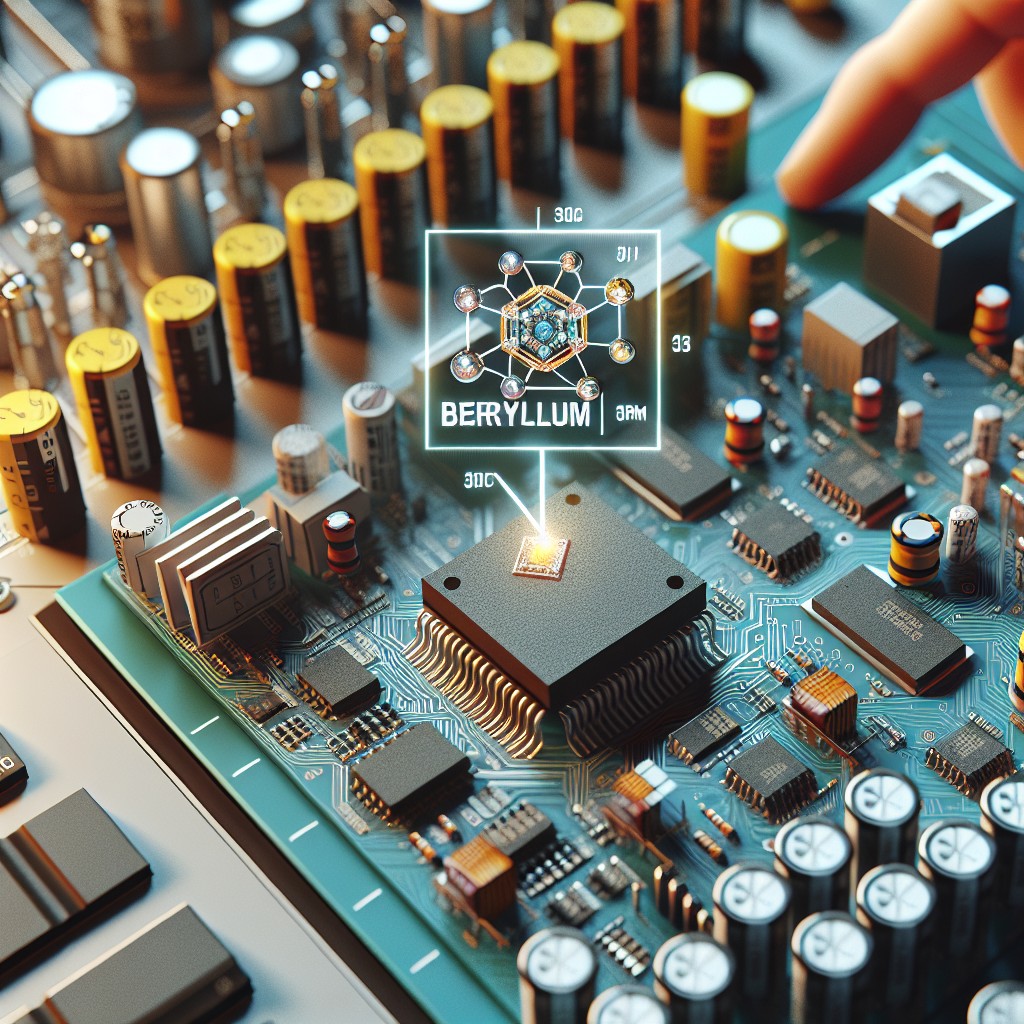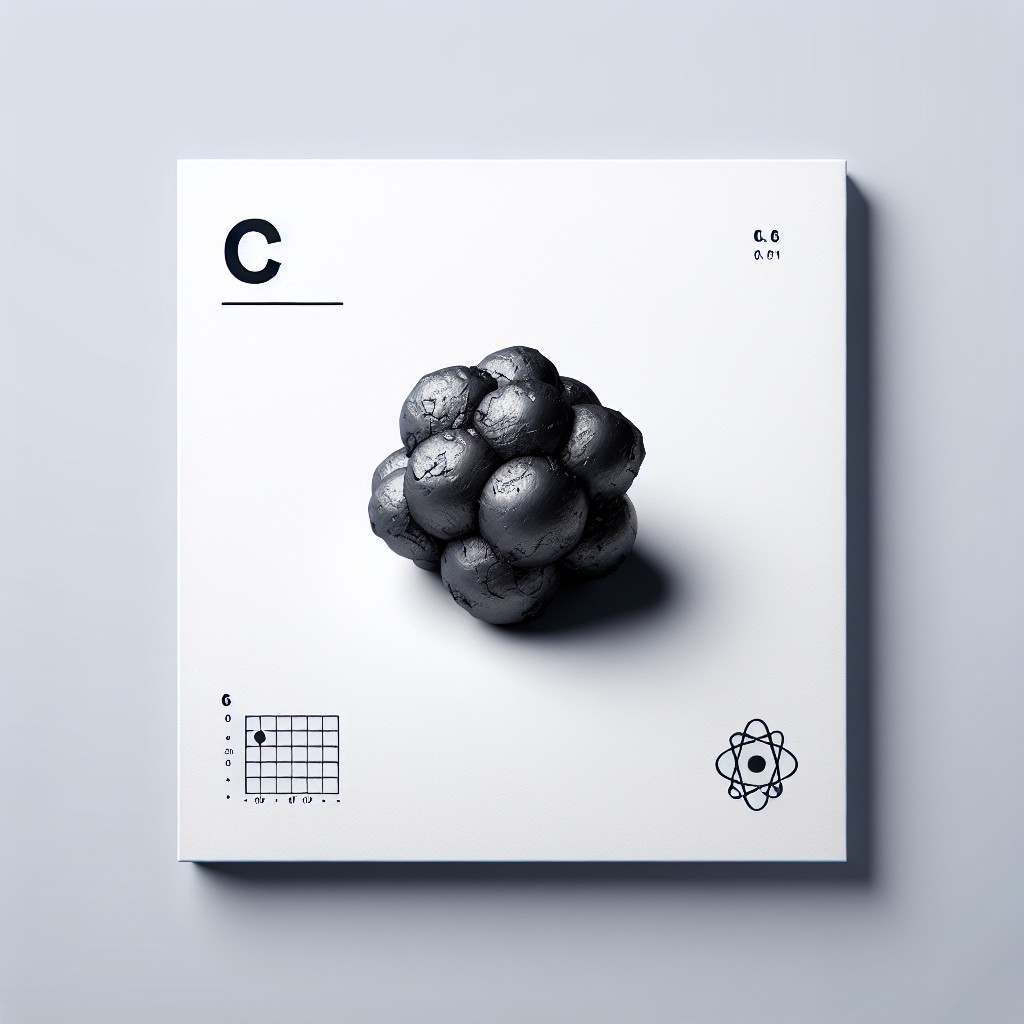Niobium is a chemical element with the symbol Nb and atomic number 41. It is a soft, grey, ductile transition metal that is found in the Earth’s crust. Niobium has several unique properties that make it valuable in various industries. It has a high melting point, excellent corrosion resistance, and is highly resistant to wear and tear. These properties, combined with its low density, make niobium an ideal material for use in a wide range of applications.
One of the most common uses of niobium is in the production of steel. Adding small amounts of niobium to steel can significantly increase its strength and toughness. This makes it ideal for use in construction, automotive, and infrastructure projects. Niobium is also used in the electronics industry, where it is used to make capacitors and other electronic components. Its high melting point and excellent electrical conductivity make it an ideal material for these applications.
Summary
- Niobium is a metal with unique properties, including high melting point, corrosion resistance, and superconductivity.
- Niobium was discovered in the early 19th century and has since found applications in various industries, including aerospace, medicine, and energy.
- Niobium alloys offer advantages such as increased strength and durability, making them ideal for use in high-stress environments.
- Niobium is crucial in space exploration and aviation due to its ability to withstand extreme temperatures and pressures.
- Niobium has potential in sustainable energy technologies, such as fuel cells and solar cells, and is also used in art and design for its aesthetic qualities.
The History of Niobium: From Discovery to Modern-day Applications
Niobium was first discovered in 1801 by English chemist Charles Hatchett. He named the element “columbium” after Columbia, the poetic name for the United States at the time. However, confusion arose when another chemist claimed to have discovered a new element called “niobium.” Eventually, it was determined that columbium and niobium were the same element, and the name niobium was officially adopted.
In the early years after its discovery, niobium had limited uses. It was primarily used as an alloying agent in steel production to improve its strength and durability. However, advancements in technology have led to new applications for niobium. Today, niobium is used in a wide range of industries, including aerospace, electronics, medicine, energy, and art and design.
Niobium in Industry: How this Metal is Used in Various Sectors
One of the major uses of niobium is in the production of steel. Adding small amounts of niobium to steel can significantly improve its strength and toughness. This makes it ideal for use in construction, automotive, and infrastructure projects. Niobium-containing steels are used in the construction of bridges, buildings, and pipelines, where strength and durability are essential.
In the electronics industry, niobium is used to make capacitors and other electronic components. Niobium capacitors have a high energy storage capacity and are used in a wide range of electronic devices, including smartphones, computers, and televisions. Niobium is also used in the production of superconductors, which have zero electrical resistance at low temperatures. Superconducting niobium alloys are used in MRI machines, particle accelerators, and other high-tech applications.
Niobium Alloys: The Advantages and Applications of Combining Niobium with Other Metals
| Advantages of Niobium Alloys | Applications of Niobium Alloys |
|---|---|
| High melting point | Aerospace industry |
| Corrosion resistance | Medical implants |
| Low thermal expansion | Nuclear reactors |
| Superconductivity | Electronics industry |
| High strength-to-weight ratio | Automotive industry |
Niobium alloys have several advantages over pure niobium. They have improved strength, hardness, and corrosion resistance, making them suitable for a wide range of applications. One common niobium alloy is niobium-titanium (Nb-Ti), which is used in superconducting magnets. These magnets are used in MRI machines, particle accelerators, and other high-tech applications.
Another common niobium alloy is niobium-zirconium (Nb-Zr), which has excellent corrosion resistance and is used in the production of chemical processing equipment. Niobium-tin (Nb-Sn) alloys are used in the production of superconducting wires for high-energy physics experiments. These alloys have the highest critical temperature among all known superconductors.
Niobium in Aerospace: How this Metal is Crucial in Space Exploration and Aviation
Niobium plays a crucial role in the aerospace industry. Its high melting point, excellent corrosion resistance, and low density make it an ideal material for use in rocket engines, aircraft engines, and space suits.
In rocket engines, niobium is used in the construction of combustion chambers and nozzles. Its high melting point allows it to withstand the extreme temperatures and pressures generated during rocket launches. Niobium alloys are also used in the construction of turbine blades and other components in aircraft engines. These alloys have excellent high-temperature strength and corrosion resistance, making them ideal for use in the demanding conditions of aviation.
In addition to its use in engines, niobium is also used in the production of space suits. The unique properties of niobium, such as its low density and excellent corrosion resistance, make it an ideal material for use in space suits. It provides protection against radiation and micrometeoroids while also being lightweight and flexible.
Niobium in Medicine: The Role of Niobium in Medical Implants and Devices

Niobium has excellent biocompatibility, meaning it is well-tolerated by the human body. This makes it an ideal material for use in medical implants and devices.
One common application of niobium in medicine is in dental implants. Niobium implants are used to replace missing teeth and provide support for dental prosthetics. The biocompatibility of niobium ensures that the implant integrates well with the surrounding bone tissue, resulting in a stable and long-lasting restoration.
Another application of niobium in medicine is in joint replacements. Niobium alloys are used to make artificial joints, such as hip and knee replacements. These alloys have excellent wear resistance and biocompatibility, making them ideal for use in these demanding applications.
Niobium in Energy: The Potential of Niobium in Sustainable Energy Technologies
Niobium has the potential to play a significant role in sustainable energy technologies. Its unique properties make it suitable for use in wind turbines, nuclear reactors, and hydrogen fuel cells.
In wind turbines, niobium is used in the production of turbine blades. Niobium alloys have excellent high-temperature strength and corrosion resistance, making them ideal for use in the demanding conditions of wind turbine operation. The addition of niobium to the alloy improves the fatigue resistance and overall performance of the blades.
In nuclear reactors, niobium is used in the production of fuel rods and other components. Niobium alloys have excellent corrosion resistance and can withstand the high temperatures and radiation levels present in nuclear reactors. The use of niobium alloys in nuclear reactors improves their safety and efficiency.
In hydrogen fuel cells, niobium is used as a catalyst support material. The unique properties of niobium, such as its high surface area and excellent corrosion resistance, make it an ideal material for use in fuel cell applications. Niobium-based catalysts can improve the efficiency and performance of hydrogen fuel cells, making them a promising technology for clean energy production.
Niobium in Art and Design: How this Metal is Used in Sculpture and Jewellery Making
Niobium’s unique properties make it a popular choice for artists and designers. Its vibrant colours, excellent corrosion resistance, and low density make it an ideal material for use in sculpture and jewellery making.
In sculpture, niobium is often used to create large-scale outdoor installations. Its excellent corrosion resistance ensures that the sculpture will withstand the elements and maintain its appearance over time. Niobium can be easily shaped and welded, allowing artists to create intricate and complex designs.
In jewellery making, niobium is valued for its vibrant colours. When anodized, niobium can take on a wide range of colours, from deep blues and purples to bright greens and yellows. These colours are created by controlling the thickness of the oxide layer on the surface of the metal. Niobium jewellery is lightweight, hypoallergenic, and durable, making it a popular choice for those with sensitive skin.
Niobium Mining and Production: The Process of Extracting and Purifying Niobium
Niobium is primarily mined from pyrochlore deposits, which are found in several countries around the world, including Brazil, Canada, and Australia. The mining process involves extracting the ore from the ground and then processing it to extract the niobium.
Once the ore is extracted, it is crushed and ground into a fine powder. The powder is then mixed with water to create a slurry, which is passed through a series of magnetic separators to remove any magnetic impurities. The resulting concentrate is then roasted at high temperatures to convert the niobium into a soluble form.
The soluble niobium is then leached with acid to separate it from other impurities. The niobium is then precipitated out of the solution using various chemical processes. The resulting niobium powder is then further processed to remove any remaining impurities and shaped into the desired form.
The Future of Niobium: Emerging Applications and Advancements in Niobium Technology
The future of niobium looks promising, with emerging applications and advancements in niobium technology. As technology continues to advance, new uses for niobium are being discovered in various industries.
One emerging application of niobium is in additive manufacturing, also known as 3D printing. Niobium alloys can be used in 3D printing to create complex shapes and structures that were previously impossible to produce using traditional manufacturing methods. This opens up new possibilities for design and innovation in industries such as aerospace, automotive, and medical.
Advancements in niobium production are also being made to improve the efficiency and sustainability of the process. New extraction and purification techniques are being developed to reduce the environmental impact of niobium mining and production. Additionally, research is being conducted to develop new niobium alloys with improved properties and performance.
The potential for niobium in emerging technologies is also being explored. For example, niobium is being investigated for use in energy storage devices, such as batteries and capacitors. Its unique properties, such as its high energy storage capacity and excellent electrical conductivity, make it a promising material for these applications.
In conclusion, niobium is a versatile and valuable metal that has a wide range of applications in various industries. Its unique properties, such as its high melting point, excellent corrosion resistance, and low density, make it an ideal material for use in steel production, electronics, superconductors, aerospace, medicine, energy, and art and design.
As technology continues to advance, the potential for niobium in emerging applications and sustainable energy technologies is promising. Advancements in niobium production are also being made to improve the efficiency and sustainability of the process. With its versatility and unique properties, niobium will continue to play a crucial role in shaping the future of various industries.
FAQs
What is Niobium (Nb)?
Niobium (Nb) is a chemical element with the symbol Nb and atomic number 41. It is a soft, grey, ductile transition metal, often found in the minerals pyrochlore and columbite.
What are the uses of Niobium?
Niobium is used in various applications, including the production of superalloys, stainless steel, and other alloys. It is also used in the production of capacitors, which are used in electronic devices such as smartphones and computers.
Is Niobium a rare element?
Niobium is not considered a rare element, as it is relatively abundant in the Earth’s crust. However, it is often found in low concentrations and can be difficult to extract.
What are the properties of Niobium?
Niobium is a soft, grey, ductile transition metal with a melting point of 2,468 degrees Celsius and a boiling point of 4,927 degrees Celsius. It has a density of 8.57 grams per cubic centimeter and is a good conductor of electricity and heat.
Is Niobium toxic?
Niobium is not considered toxic and is not known to have any harmful effects on human health. However, like all metals, it can be dangerous if ingested in large quantities.
Where is Niobium found?
Niobium is found in various minerals, including pyrochlore and columbite, which are often found in Brazil, Canada, and Australia. It is also found in smaller quantities in other countries around the world.


